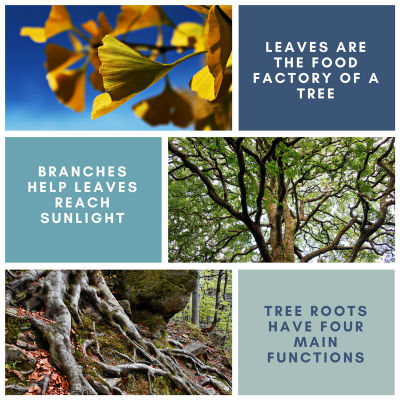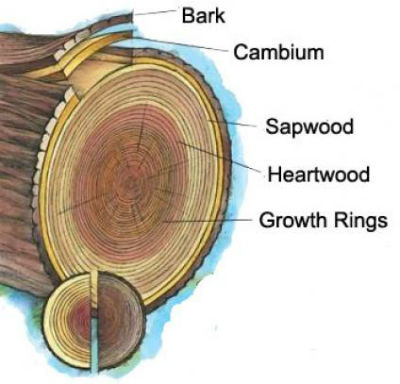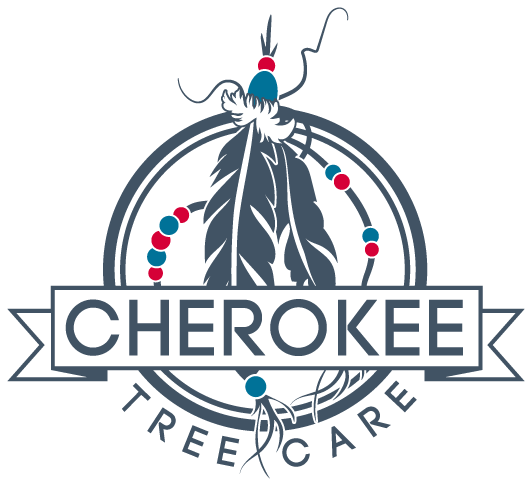It’s no question that the trees in your landscape are fascinating and complex. We know the basic components of a tree, but do we understand the purpose of those parts? In this month’s blog, we will discuss the basic anatomy of a tree. We’ll provide a more in-depth tree description – including the parts of a tree and their functions.

Tree Leaves: Leaves come in all different shapes and sizes. Whether they are in needle form and remain on the tree year-round or in a broad form and deciduous, the leaf is one of the best tools to use for tree identification. Leaves are the food factory of the tree. Because of their ability to use the process of photosynthesis to create energy for the tree during the growing season, we never want to take more than 25% of the leaf at one time when we prune a tree.
Tree Branches: The branches on a tree hold the leaves and help them reach sunlight. You will notice in heavily wooded areas a tree will grow taller to reach sunlight rather than spreading out. Together, the leaves and branches make up the crown of the tree. The tree crown helps protect the trunk of the tree from the sun and protects the soil directly below from compacting rain. The ideal branching structure for trees in our landscape is excurrent – a main trunk spanning the tree height – with lateral branches.
Tree Trunk: Inside the trunk are layers of cells. These layers start at the center (the heartwood) and move outward to the xylem, cambium, phloem, and bark.

- Heartwood: The heartwood is the inner core of non-living wood that supports the tree.
- Xylem: The Xylem is also known as the sapwood. This is a layer of cells that transport water and minerals up from the roots throughout the tree and to the leaves.
- Cambium: The Cambium is a layer of dividing cells that causes growth in branch and trunk diameter.
- Phloem: This is the inner bark layer that transports nutrients and sugars made from the leaves down the tree
- Bark: Bark surrounds the trunk and is the tree’s protection and defense against damage.
Tree Roots: Roots have four main functions: anchorage, storage, absorption, and conduction. What most people don’t realize is that roots grow more horizontally than vertically and will grow 2-3 times past the dripline of the canopy. Roots will grow where conditions are favorable and most fine absorbing roots can be found in the upper few inches of soil.
Trees are very complex living organisms. These are just a few structures that make up trees and their functions. Give your arborist a call to see how your landscape could benefit from our tree services.

